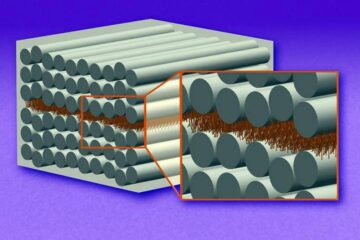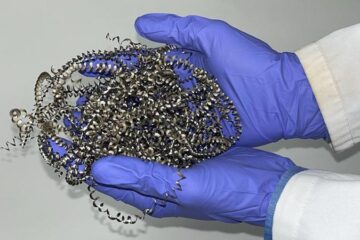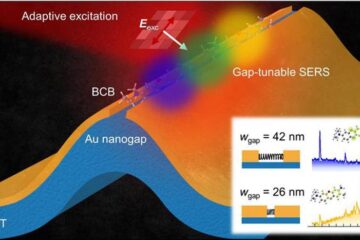Leading astronomers and geophysicists honoured with RAS medals and prizes

The Gold Medal for Astronomy is awarded to Professor Joseph Silk FRS of the Nuclear and Astrophysics Laboratory at the University of Oxford. This is awarded in recognition of Professor Silk’s 40 years of achievement in cosmology. Professor Silk predicted how the cosmic microwave background – the fossil remnant of the heat of the Universe that originated in the Big Bang – would vary on small angular scales. These predictions were verified by the WMAP satellite and many other experiments.
Professor Silk has made many other contributions to astronomy, for example in the theory of star formation, high-energy astrophysics and the intergalactic medium (the material between galaxies). He is the author of popular science books such as The Left Hand of Creation, The Big Bang, A Short History of the Universe and The Infinite Cosmos.
The Gold Medal for Geophysics is awarded to Professor Brian Kennett FRS of the Research School of Earth Sciences at the Australian National University. Professor Kennett is one of the most complete seismologists of his generation. He made seminal advances in understanding the internal processes of the Earth, from the reflection of earthquake waves to oscillations of the whole planet.
Professor Kennett is a past president of the International Association of Seismology and Physics of the Earth’s Interior. He has been editor of Physics of the Earth and Planetary Interiors and served as Pacific region editor of Geophysical Journal International.
The Herschel Medal, named after the first Society President, William Herschel, is awarded to Professor Max Pettini of the University of Cambridge. Professor Pettini has made seminal contributions to extragalactic cosmology. He used observations of other galaxies and the intergalactic medium to develop our ideas of cosmic chemical evolution and went on to discover and study distant galaxies that formed in the first 3 billion years after the Big Bang. Professor Pettini also led a group that traced the way the abundances of heavier elements in galaxies changed from the early Universe to the present day, helping to clarify the star formation history of the Universe.
The Jackson-Gwilt Medal is awarded to Dr Stephen Shectman of the Carnegie Institution of Science for his outstanding work in astronomical instrumentation and telescope construction. Dr Shectman was the project scientist for the two Magellan 6.5-m mirror telescopes in Chile. He also designed and built a number of sensitive instruments for detecting and analysing the light from faint objects. Dr Shectman is now a major creative influence behind the design of the Giant Magellan Telescope, which will comprise seven separate 8-m mirrors that together will be equivalent to a single telescope with a mirror 22m across.
The Chapman Medal is awarded to Professor Andre Balogh of Imperial College London. Professor Balogh has led outstanding work in the area of solar-terrestrial physics. Until his retirement, he was the principal investigator for the magnetometer on the groundbreaking four-spacecraft Cluster mission. Under his leadership, the Cluster science group at Imperial College made many important discoveries on the Earth’s magnetic field. Balogh also led work on the magnetometer on the Ulysses spacecraft and promoted the idea of a new mission to Mercury that ultimately came to fruition as the European Space Agency’s BepiColombo spacecraft.
The Fowler Prize for Astronomy is awarded to Dr William Percival of the University of Portsmouth. Dr Percival led a key analysis using the 2 degree Field (2dF) Galaxy Redshift Survey, which measured the distances of nearly a quarter of a million galaxies. He provided an accurate estimate of the density ratio between baryonic (‘normal’) and ‘dark’ matter, a value of fundamental importance in cosmology.
The Fowler Award for Geophysics is awarded to Dr Christine Thomas of the University of Liverpool. Dr Thomas is a leading figure in the new generation of seismologists. She specialises in array seismology, which uses networks of seismometers to image the fine-scale structure of the interior of the Earth. Much of her work has been on the enigmatic thermo-chemical boundary layer, D’’, that lies at the base of the Earth’s mantle. Dr Thomas serves on the Education Board of the British Geophysics Association and is an excellent role model for young women in science.
The Award for Services to Astronomy is given to Dr Gunther Eichhorn, of the Smithsonian Astrophysical Observatory and Director of Indexing at Springer. Dr Eichhorn was the project manager for the NASA Astrophysics Data System (ADS), the online database that includes the vast majority of astronomical literature. ADS gives open access to astronomical research material and has revolutionised the field, allowing astronomers and others to investigate publications on an equal basis.
The Group Achievement Award goes to the 2dF Galaxy Redshift Survey Team. From 1997 to 2002, this group used the 2dF instrument on the Anglo-Australian Telescope to survey more than 200000 galaxies, measuring their distances and distribution. They were able to develop a map of a large part of the ‘local’ Universe, showing how galaxies are found in clusters and superclusters. The team’s results gave astronomers a good understanding of the roles of normal and dark matter in the evolution of the cosmos.
The following have been made Honorary Fellows of the Society in recognition of their outstanding work:
Michel Mayor, Professor of Astronomy at the University of Geneva
Professor Tim de Zeeuw of Leiden Observatory
Dr Michael Hoskin, historian of astronomy
Dr Spiro Antiochos of the Center for Space Research at the Naval Research Laboratory in the USA
Professor Michael Rowan-Robinson, President of the Royal Astronomical Society commented “The RAS is proud to recognise the wealth of talent in our field, both in the UK and across the world. I would like to congratulate the recipients of our medals and awards, prizes which recognise their truly outstanding work.”
Media Contact
More Information:
http://www.ras.org.ukAll latest news from the category: Awards Funding
Newest articles

“Nanostitches” enable lighter and tougher composite materials
In research that may lead to next-generation airplanes and spacecraft, MIT engineers used carbon nanotubes to prevent cracking in multilayered composites. To save on fuel and reduce aircraft emissions, engineers…

Trash to treasure
Researchers turn metal waste into catalyst for hydrogen. Scientists have found a way to transform metal waste into a highly efficient catalyst to make hydrogen from water, a discovery that…

Real-time detection of infectious disease viruses
… by searching for molecular fingerprinting. A research team consisting of Professor Kyoung-Duck Park and Taeyoung Moon and Huitae Joo, PhD candidates, from the Department of Physics at Pohang University…





















